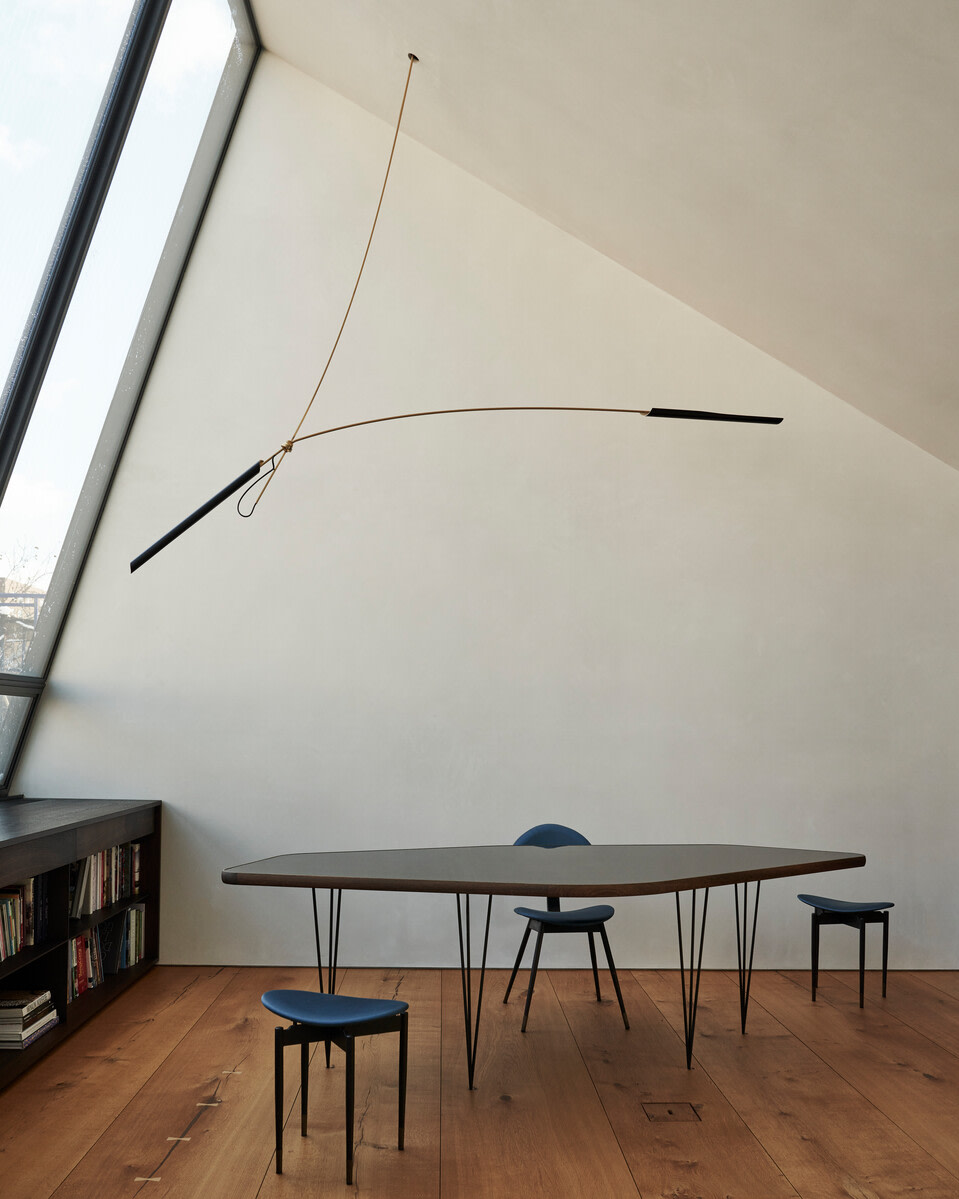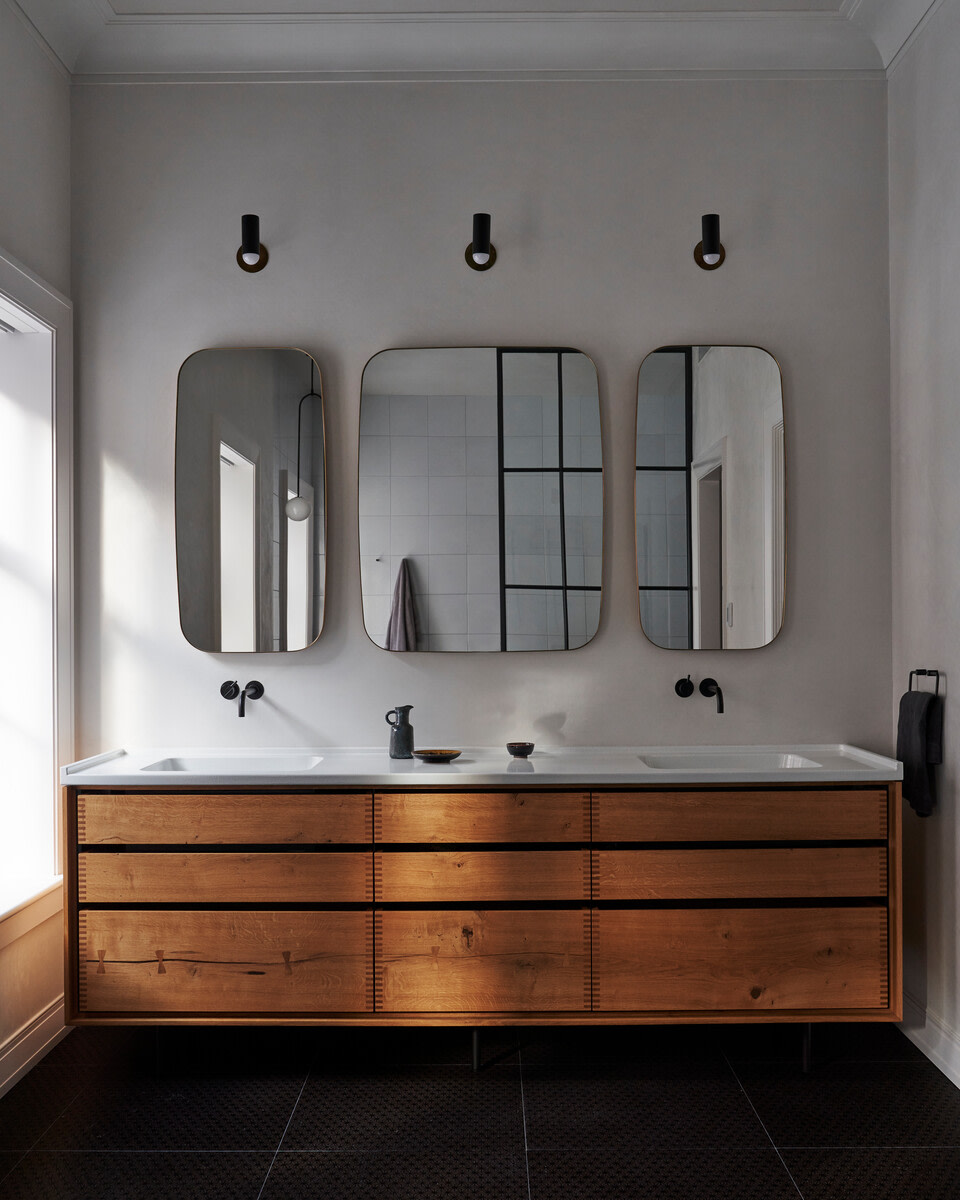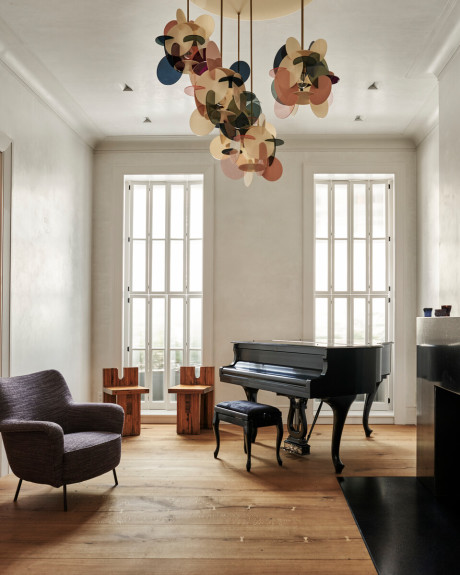
This townhouse in New York City is a celebration of colours and materials. The Brooklyn-based studio O’Neill Rose Architects undertook the renovation of this 1890s townhouse with the goal of honouring history and architecture while creating a modern home that the family of the house could retreat to and escape from the hectic city life.
Private residence – Gramercy, New York City, USA
Architect: O’Neill Rose Architects
Photographer: Adrian Gaut & Birgitta Wolfgang
_______________
Heart Oak, Curated widths
Thickness: 30 mm. / US 1.2"
Curated widths: 400–450–500 mm. / US 15.7"–17.7"–19.7"
Full lengths, up to 5.8 m / US 19' 4"
Finish: Natural Oil
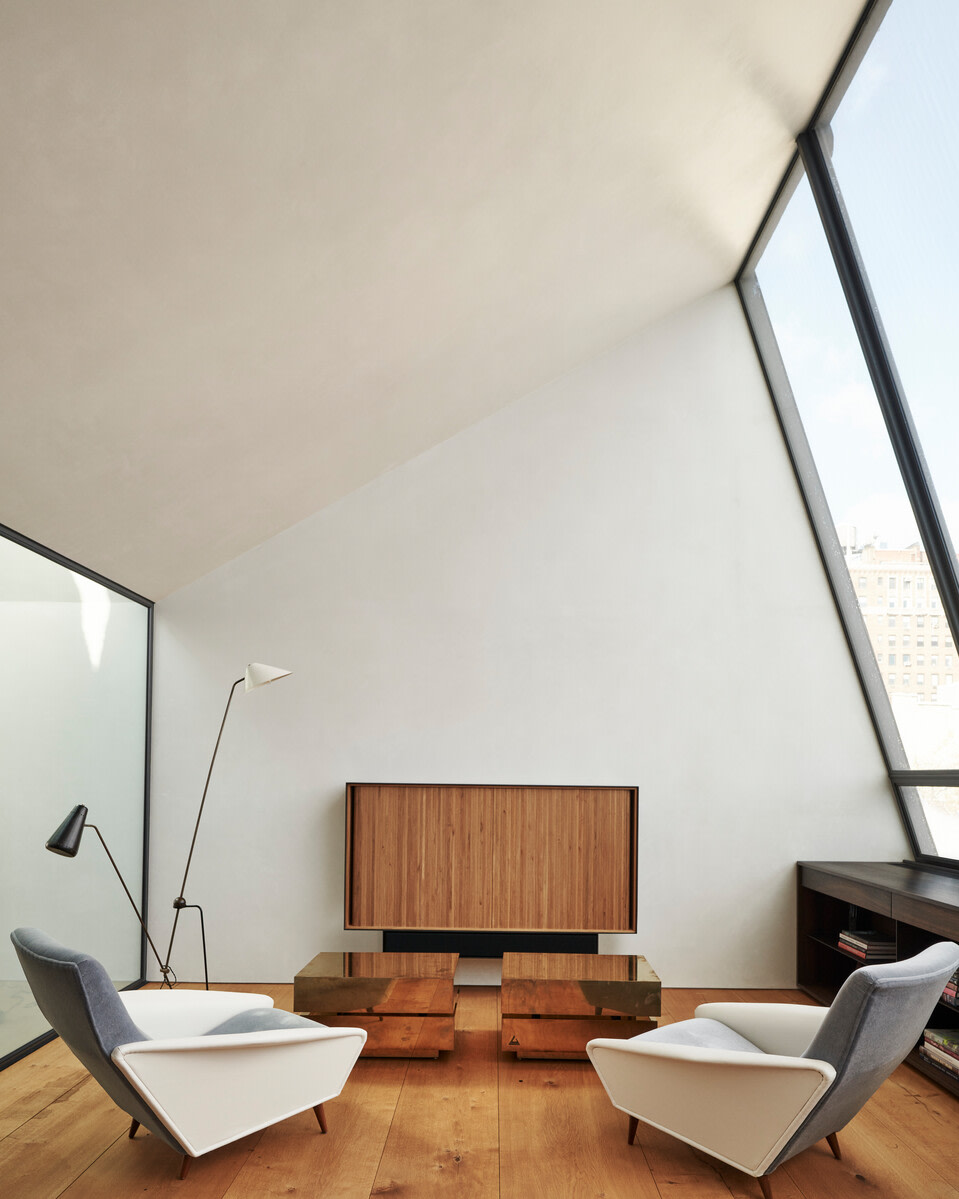
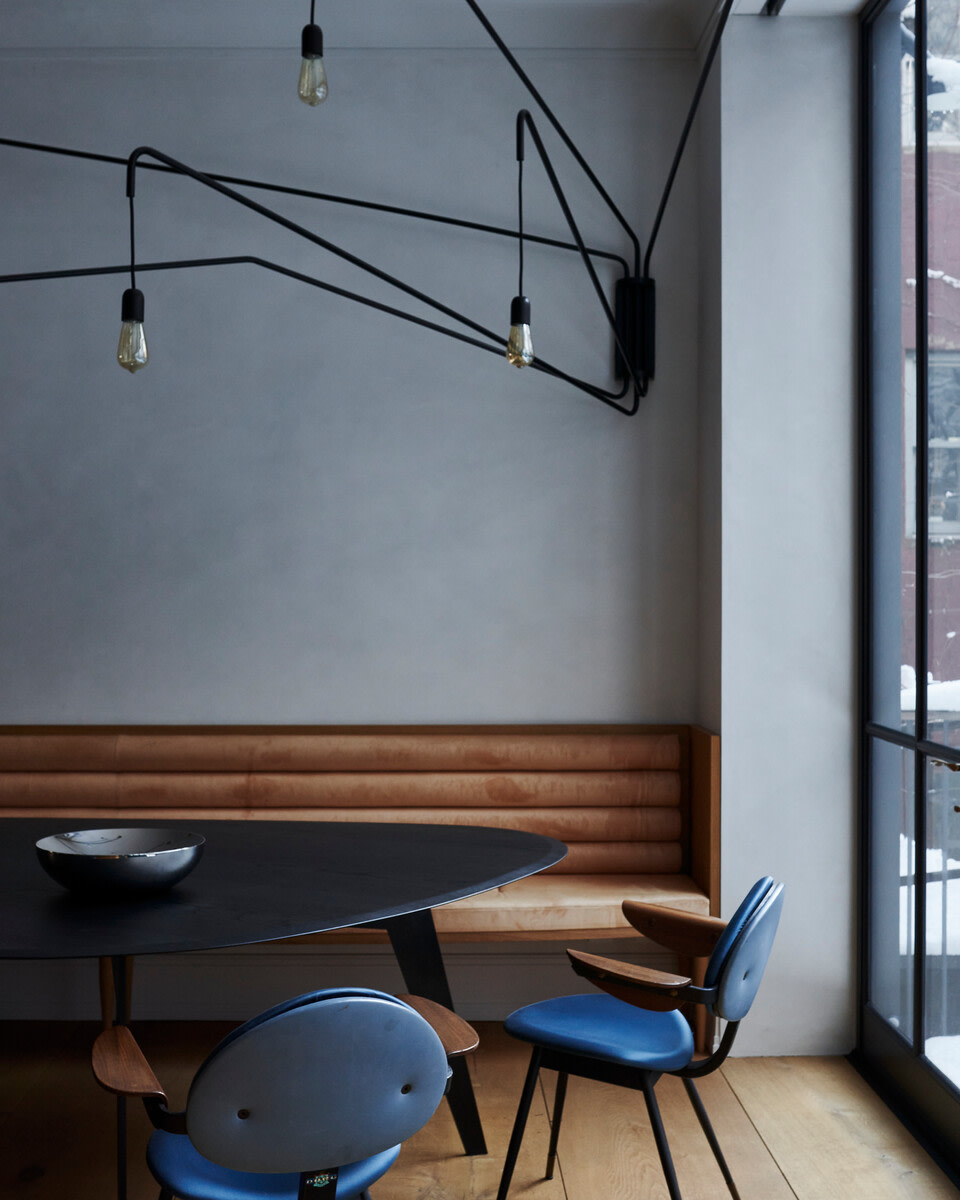
The list of materials was ready from the outset: plaster, stone and wood were the designated main ingredients for the renovation and expansion of this townhouse in the Gramercy neighbourhood in New York. Even before commissioning O’Neill Rose Architects to renovate their home, the owners had fallen in love with Dinesen HeartOak, visited the forest where the oak trees grow and bought the floors. It was clearly important to them to understand all the elements of the renovation project, from manufacturer to craftsmanship and materials.



This approach resonated with the founders of O’Neill Rose Architects, Devin O’Neill and Faith Rose, who spent time with the different builders and designers to understand the origins of the materials better and get to know the people behind them.
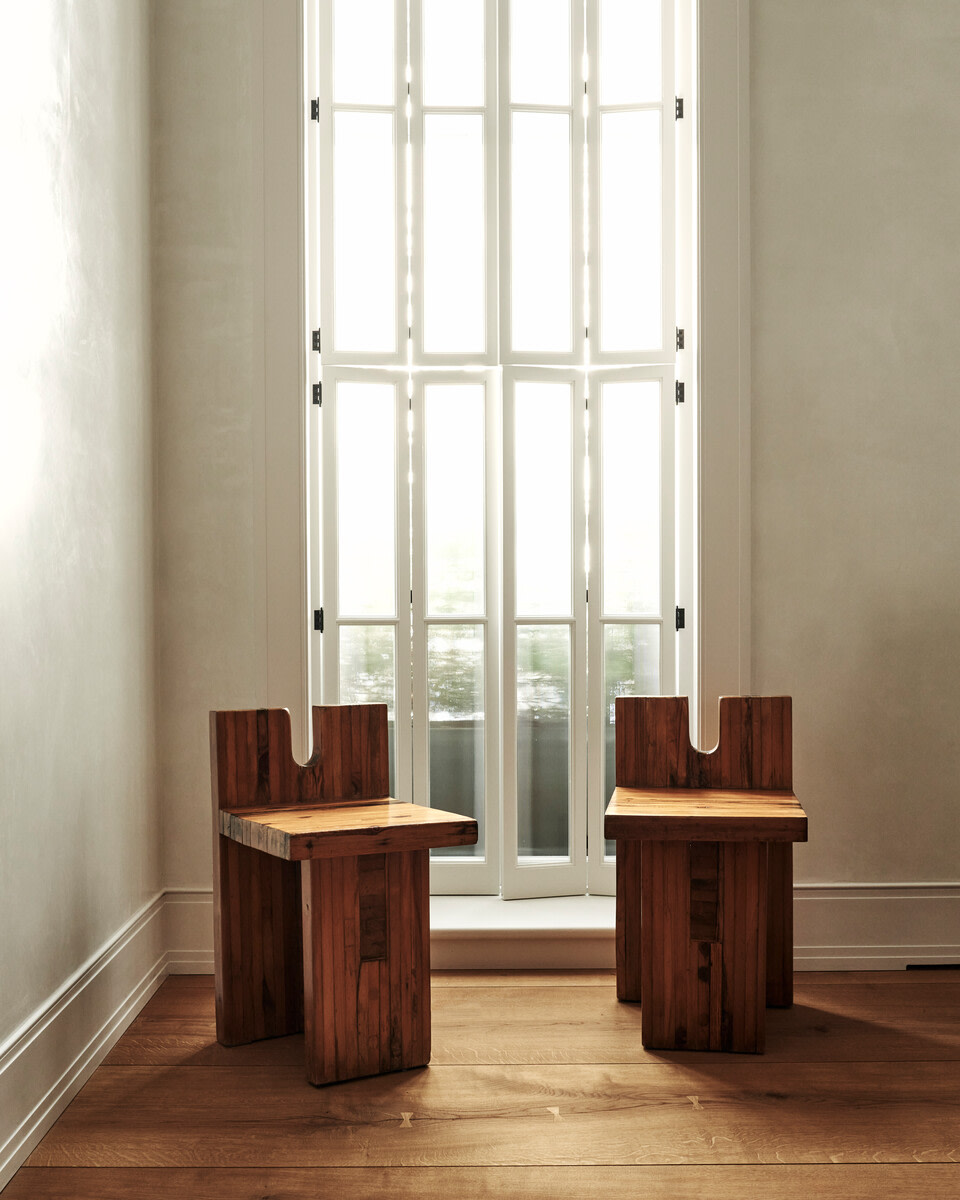
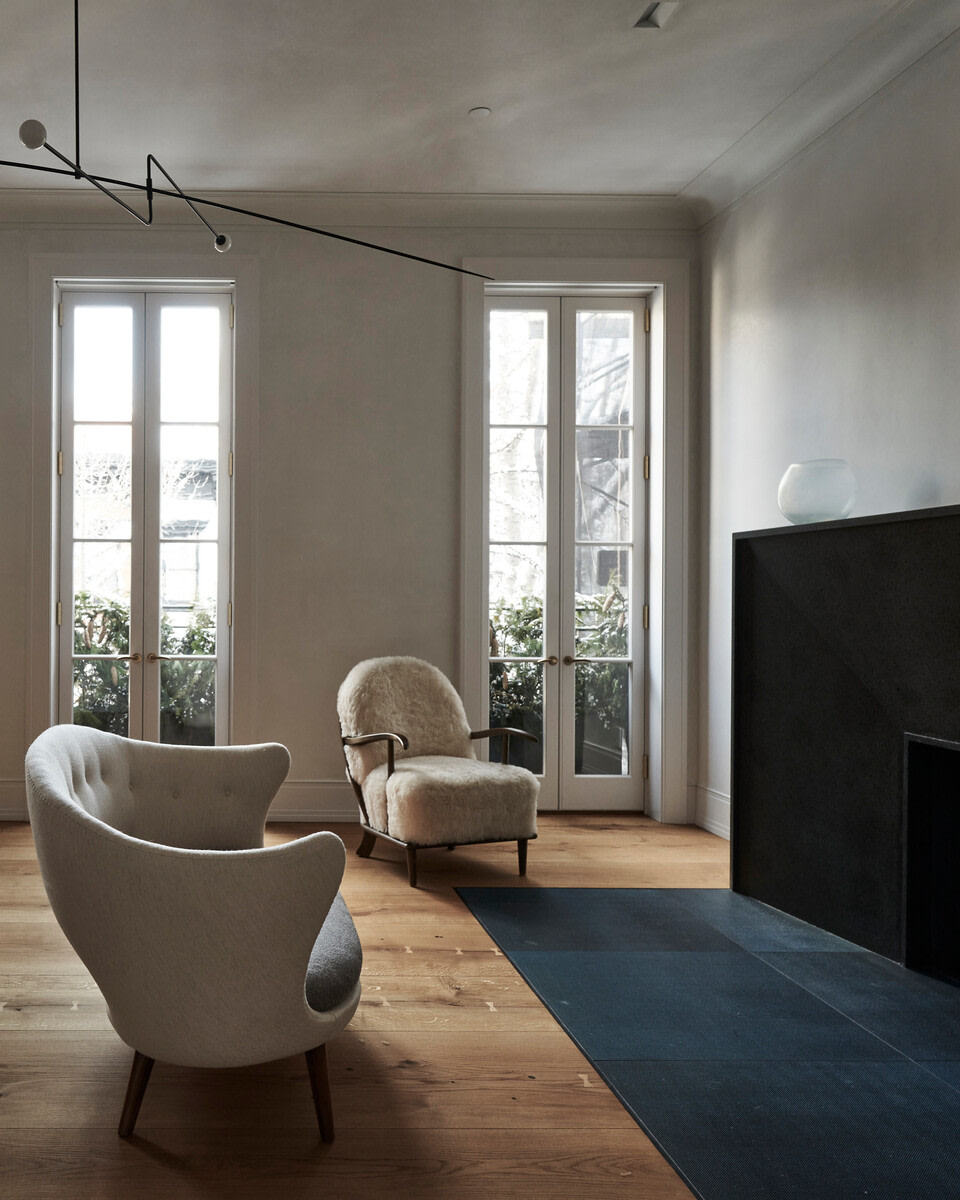

The historical facade of the townhouse underwent careful restoration with respect to the building’s century-long history and its protected status. Inside, however, the townhouse was completely transformed and expanded from four to five floors.

O’Neill Rose Architects introduced a vertical spatial organisation: the lower floors are intimate and welcoming, and their interior is designed for spending time with family and friends. In contrast, the upper floors let in the urban atmosphere. The living room and kitchen are intimate spaces on the ground level with access to the walled backyard. However, the rooms become increasingly open to the urban atmosphere on higher floors. The new top floor suspends the boundary between the interior and exterior. With large, angled windows, a sculptural skylight, windows in the interior walls between rooms and a penthouse patio open to the sky, this new extension engages in a continuous dialogue between interior and exterior, between home and city.
